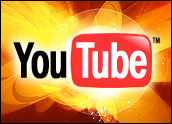
In the early days of YouTube, one could find scads of commercial pornography, plenty of amateur pole-dancing and scatological material out the wazoo, but as the world’s top user-generated video Web site chases down more revenue, it has also cracked down on the kind of mature content that might make advertising executives a tad nervous when they’re deciding where to place their brands — not to mention moms and dads wondering what uploaded atrocities the kids are viewing now.
The evolution continues; this week YouTube announced new community guidelines designed to “help ensure that you’re viewing content that’s relevant to you, and not inadvertently coming across content that isn’t,” according to a company blog post.
Defining ‘Suggestive’
YouTube is providing more detail about what would be considered too “sexually suggestive,” age-restricting the content that meets those new standards and using software to demote mature content from its Most Viewed and Top Favorites lists. The site is also using software algorithms in its thumbnail photo captures to make sure they accurately represent the content that’s in those videos.
So what does YouTube now consider sexually suggestive? A page titled “Inappropriate Content: Age-Restricted Videos” lists examples such as “dramatized or implied sexual conduct, depending on whether or not it is intended or designed to arouse viewers;” nudity that includes exposed or partially covered body parts — what Monty Python used to call “the naughty bits” — as well as sheer clothing; suggestive “video settings,” such as a bed, that are associated with sexual activity; poses designed to “arouse the viewer;” and actions that suggest “willingness to engage in sexual activity (e.g. kissing, provocative dancing, fondling).”
Responding to User Suggestions
“The intention for this is to help users have a better overall experience, so that you don’t inadvertently come across stuff you’re not wanting to see” Scott Rubin, a YouTube spokesperson, told TechNewsWorld. “If I’m sitting down with Grandma or Mom, I’m not coming across sexually suggestive content.”
Providing transparency to users was a major reason for the changes, Rubin said. “We have questions from users about what is it that we mean when we say ‘sexually suggestive,’ what might get age-restricted. We wanted to provide an explanation.”
Rubin said complaints from advertisers or major studios did not spur the new standards, although he did acknowledge the move might calm some fears. “There’s an indirect benefit to this. For some advertisers, they will see this as a positive move on our part, but that was not the catalyst.”
The moves will certainly not be lost on advertisers as they head into a post-Christmas season with tighter budgets and a greater need to be more efficient with ad dollars, Gartner analyst Allen Weiner told TechNewsworld. “The time is ripe for them [YouTube] to do that, mostly because in 2009 we’re going to see a good, old-fashioned steel-cage death match between YouTube and Hulu for dominance of that space. Hulu by default is a clean, well-lit space and YouTube will have to follow suit.
“Advertisers need high-quality inventory, and given that YouTube has more video than anybody else, advertisers are saying, ‘we don’t want to have any chance to be associated with that (suggestive content), so in order for us to advertise fully on YouTube, you’re going to need to get rid of that stuff.’ With the economy the way it is, advertisers are very willing to shift TV dollars to the Web. It’s more efficient, cheaper and far more easy to target and to track. That’s what makes the opportunity paramount” for YouTube, Weiner said.
Not Your Older Brother’s YouTube?
Taso Lagos, professor and lecturer in the communications department at the University of Washington, wonders what’s been lost as YouTube continues its maturation process and seeks new business. “From their standpoint, I understand them trying to be much more acceptable for a larger audience,” Lagos told TechNewsWorld, “but at the same time, the quirkiness representing a public voice, and freedom of speech, is lost.”
Lagos knows that the vast ocean of data that is the Internet offers all kinds of harbors for all kinds of content, and that kids will find forbidden content elsewhere if they look hard enough. Still, “we live in a country where we’re dealing with realpolitik and idealism, and sometimes realpolitik and business decisions are very powerful and sometimes you have to accede to them. You lose some uniqueness, but it’s strictly a business decision they have to make sometimes.”
Rubin makes clear that explicit pornography was never condoned by YouTube and whenever it was uploaded, it was taken down quickly. The company will still rely on users to flag questionable content, and although the new standards also try to provide more clarity on profanity, the often profane statements from users commenting on videos will remain unchanged.
“We at YouTube are strong believers in free expression and encourage people to have different points of view,” Rubin said. “That’s the great value of YouTube. People can heartily disagree with each other and this is a forum for that kind of conversation. You’ve seen that in video responses to what people post. We’re not talking about harassment. We talk on our comment guidelines about the line between unpopular opinion and hate speech. This effort is about the videos.”



















































